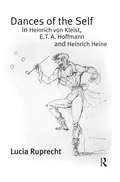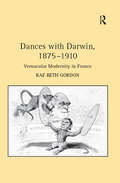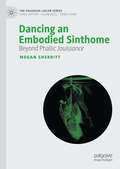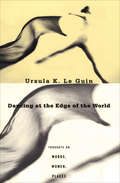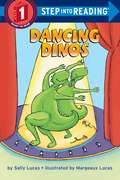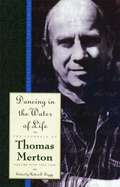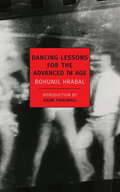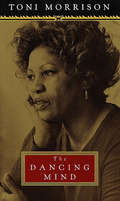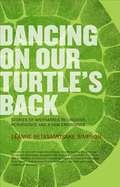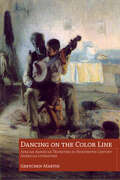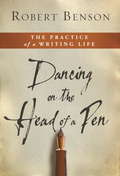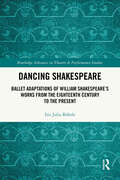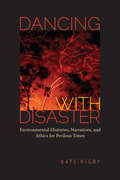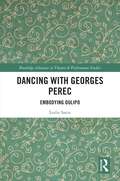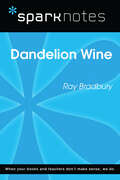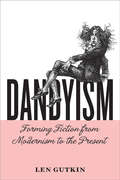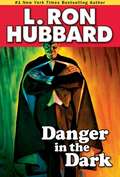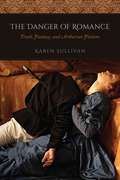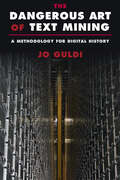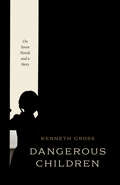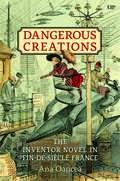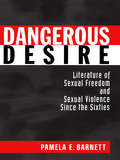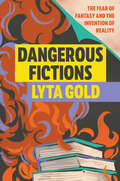- Table View
- List View
Dances of the Self in Heinrich von Kleist, E.T.A. Hoffmann and Heinrich Heine
by Lucia RuprechtLucia Ruprecht's study is the first monograph in English to analyse the relationship between nineteenth-century German literature and theatrical dance. Combining cultural history with close readings of major texts by Heinrich von Kleist, E.T.A. Hoffmann and Heinrich Heine, the author brings to light little-known German resources on dance to address the theoretical implications of examining the interdiscursive and intermedial relations between the three authors' literary works, aesthetic reflections on dance, and dance of the period. In doing so, she not only shows how dancing and writing relate to one another but reveals the characteristics that make each mode of expression distinct unto itself. Readings engage with literary modes of understanding physical movement that are neglected under the regime of eighteenth-century aesthetic theory, and of classical ballet, setting the human, frail and expressive body against the smoothly idealised neoclassicist ideal. Particularly important is the way juxtaposing texts and performance practice allows for the emergence of meta-discourses about trauma and repetition and their impact on aesthetics and formulations of the self and the human body. Related to this is the author's concept of performative exercises or dances of the self which constitute a decisive force within the formation of subjectivity that is enacted in the literary texts. Joining performance studies with psychoanalytical theory, this book opens up new pathways for understanding Western theatrical dance's theoretical, historical and literary continuum.
Dances with Darwin, 1875–1910: Vernacular Modernity in France
by Rae Beth GordonExamining the extraordinary influence of Darwin's theory of evolution on French thought from 1875 to 1910, Rae Beth Gordon argues for a reconsideration of modernism both in time and in place that situates its beginnings in the French café-concert aesthetic. Gordon weaves the history of medical science, ethnology, and popular culture into a groundbreaking exploration of the cultural implications of gesture in dance performances at late-nineteenth-century Parisian café-concerts and music halls. While art historians have studied the ties between primitivism and modernism, their convergence in fin-de-siècle popular entertainment has been largely overlooked. Gordon argues that while the impact of Darwinism was unprecedented in science, it was no less present in popular culture through the popular press and popular entertainment, where it constituted a kind of "evolutionist aesthetic" on display in the café-concert, circus, and music-hall as well as in the spectator's reception of the representations on the stage. Modernity in these sites, Gordon contends, was composed by the convergence of contemporary medical theory with representations of the primitive, staged in entertainments that ranged from the can-can, Missing Links, and epileptic singers to the Cake-Walk. Her anthropology of gesture uncovers in these dislocations of the human form an aesthetic of disorder a half century before the eruptions of Dada and Surrealism.
Dancing an Embodied Sinthome: Beyond Phallic Jouissance (The Palgrave Lacan Series)
by Megan SherrittThis book provides the first in-depth analysis of Lacanian psychoanalytic theory and the art of dance and explores what each practice can offer the other. It takes as its starting point Jacques Lacan’s assertion that James Joyce’s literary works helped him create what Lacan terms a sinthome, thereby preventing psychosis. That is, Joyce’s use of written language helped him maintain a “normal” existence despite showing tendencies towards psychosis. Here it is proposed that writing was only the method through which Joyce worked but that the key element in his sinthome was play, specifically the play of the Lacanian real.The book moves on to consider how dance operates similarly to Joyce’s writing and details the components of Joyce’s sinthome, not as a product that keeps him sane, but as an interminable process for coping with the (Lacanian) real. The author contends that Joyce goes beyond words and meaning, using language’s metre, tone, rhythm, and cadence to play with the real, mirroring his experience of it and confining it to his works, creating order in the chaos of his mind. The art of dance is shown to be a process that likewise allows one to play with the real. However, it is emphasized that dance goes further: it also teaches someone how to play if one doesn't already know how. This book offers a compelling analysis that sheds new light on the fields of psychoanalysis and dance and looks to what this can tell us about—and the possibilities for—both practices, concluding that psychoanalysis and dance both offer processes that open possibilities that might otherwise seem impossible. This original analysis will be of particular interest to those working in the fields of psychoanalysis, aesthetics, psychoanalytic theory, critical theory, art therapy, and dance studies.
Dancing at the Edge of the World: Thoughts on Words, Women, Places
by Ursula K. Le Guin"I have decided that the trouble with print is, it never changes its mind,” writes Ursula Le Guin in her introduction to Dancing at the Edge of the World. But she has, and here is the record of that change in the decade since the publication of her last nonfiction collection, The Language of the Night. And what a mind - strong, supple, disciplined, playful, ranging over the whole field of its concerns, from modern literature to menopause, from utopian thought to rodeos, with an eloquence, wit, and precision that makes for exhilarating reading.
Dancing Dinos
by Sally LucasHow do you control a bunch of mischievous dinosaurs? A young boy finds out when the illustrations in his dinosaur picture book come to life.
Dancing in the Water of Life
by Thomas MertonThe sixties were a time of restlessness, inner turmoil, and exuberance for Merton during which he closely followed the careening development of political and social activism - Martin Luther King, Jr., and the March on Selma, the Catholic Worker Movement, the Vietnam war, and the assassination of John F. Kennedy. Volume 5 chronicles the approach of Merton's fiftieth birthday and marks his move to Mount Olivet, his hermitage at the Abbey of Gethsemani, where he was finally able to fully embrace the joys and challenges of solitary life: 'In the hermitage, one must pray of go to seed. The pretense of prayer will not suffice. Just sitting will not suffice . . . Solitude puts you with your back to the wall (or your face to it!), and this is good' (13 October, 1964).
Dancing in the Water of Life
by Thomas MertonThe sixties were a time of restlessness, inner turmoil, and exuberance for Merton during which he closely followed the careening development of political and social activism - Martin Luther King, Jr., and the March on Selma, the Catholic Worker Movement, the Vietnam war, and the assassination of John F. Kennedy. Volume 5 chronicles the approach of Merton's fiftieth birthday and marks his move to Mount Olivet, his hermitage at the Abbey of Gethsemani, where he was finally able to fully embrace the joys and challenges of solitary life: 'In the hermitage, one must pray of go to seed. The pretense of prayer will not suffice. Just sitting will not suffice . . . Solitude puts you with your back to the wall (or your face to it!), and this is good' (13 October, 1964).
Dancing Lessons for the Advanced in Age
by Michael Henry Heim Bohumil Hrabal Adam ThirlwellRake, drunkard, aesthete, gossip, raconteur extraordinaire: the narrator of Bohumil Hrabal's rambling, rambunctious masterpiece Dancing Lessons for the Advanced in Age is all these and more. Speaking to a group of sunbathing women who remind him of lovers past, this elderly roué tells the story of his life--or at least unburdens himself of a lifetime's worth of stories. Thus we learn of amatory conquests (and humiliations), of scandals both private and public, of military adventures and domestic feuds, of what things were like "in the days of the monarchy" and how they've changed since. As the book tumbles restlessly forward, and the comic tone takes on darker shadings, we realize we are listening to a man talking as much out of desperation as from exuberance. Hrabal, one of the great Czech writers of the twentieth century, as well as an inveterate haunter of Prague's pubs and football stadiums, developed a unique method which he termed "palavering," whereby characters gab and soliloquize with abandon. Part drunken boast, part soul-rending confession, part metaphysical poem on the nature of love and time, this astonishing novel (which unfolds in a single monumental sentence) shows why he has earned the admiration of such writers as Milan Kundera, John Banville, and Louise Erdrich.
The Dancing Mind
by Toni MorrisonOn the occasion of her acceptance of the National Book Foundation Medal for Distinguished Contribution to American Letters on the sixth of November, 1996, Nobel laureate Toni Morrison speaks with brevity and passion to the pleasures, the difficulties, the necessities, of the reading/writing life in our time.
Dancing On Our Turtle's Back: Stories of Nishnaabeg Re-creation, Resurgence, and a New Emergence
by Leanne SimpsonMany promote Reconciliation as a "new" way for Canada to relate to Indigenous Peoples. In Dancing on Our Turtle's Back: Stories of Nishnaabeg Re-Creation, Resurgence, and a New Emergence activist, editor, and educator Leanne Simpson asserts reconciliation must be grounded in political resurgence and must support the regeneration of Indigenous languages, oral cultures, and traditions of governance. Simpson explores philosophies and pathways of regeneration, resurgence, and a new emergence through the Nishnaabeg language, Creation Stories, walks with Elders and children, celebrations and protests, and meditations on these experiences. She stresses the importance of illuminating Indigenous intellectual traditions to transform their relationship to the Canadian state. Challenging and original, Dancing on Our Turtle's Back provides a valuable new perspective on the struggles of Indigenous Peoples.
Dancing on the Color Line: African American Tricksters in Nineteenth-Century American Literature
by Gretchen MartinThe extensive influence of the creative traditions derived from slave culture, particularly black folklore, in the work of nineteenth- and twentieth-century black authors, such as Ralph Ellison and Toni Morrison, has become a hallmark of African American scholarship. Yet similar inquiries regarding white authors adopting black aesthetic techniques have been largely overlooked. Gretchen Martin examines representative nineteenth-century works to explore the influence of black-authored (or narrated) works on well-known white-authored texts, particularly the impact of black oral culture evident by subversive trickster figures in John Pendleton Kennedy's Swallow Barn, Harriet Beecher Stowe's Uncle Tom's Cabin, Herman Melville's Benito Cereno, Joel Chandler Harris's short stories, as well as Mark Twain's Adventures of Huckleberry Finn and Pudd'nhead Wilson. As Martin indicates, such white authors show themselves to be savvy observers of the many trickster traditions and indeed a wide range of texts suggest stylistic and aesthetic influences representative of the artistry, subversive wisdom, and subtle humor in these black figures of ridicule, resistance, and repudiation. The black characters created by these white authors are often dismissed as little more than limited, demeaning stereotypes of the minstrel tradition, yet by teasing out important distinctions between the wisdom and humor signified by trickery rather than minstrelsy, Martin probes an overlooked aspect of the nineteenth-century American literary canon and reveals the extensive influence of black aesthetics on some of the most highly regarded work by white American authors.
Dancing on the Head of a Pen: The Practice of a Writing Life
by Robert BensonIn this masterful blend of the practical and the spiritual, Robert Benson invites you into the work and rewards of a writer's life. More than a primer on effective writing, Dancing on the Head of a Pen is a winsome guide to the place in the heart where the life of the spirit meets the life of art. "Dancing on the Head of a Pen is a pure delight to read. Encouraging, honest, practical, and important. I needed this book."--Melody Carlson, author of more 200 books including Finding Alice "With deceptive simplicity and an almost seductive easiness in his voice, Benson lays open before us the filigreed mystique of the writing life in all its beauty, its unmitigated angst, and its inescapable vocation."--Phyllis Tickle, author of numerous books including The Divine Hours "Robert Benson's Dancing on the Head of a Pen is a gem. It is wise, witty, and inspiring--a trifecta seldom achieved by a book on the writing life."--James Scott Bell, bestselling author of Plot & Structure After some forty years and nearly twenty books, I have learned I do not know about a lot of things, but I do know how to write a book. Some of these things are habits stolen from other writers, writers far better than I am. Some are disciplines I stumbled upon to feed both the caliber of the writing and the work of being a writer. Some of them are practices I discovered on my own after years of dancing on the head of a pen.--Robert Benson The Life of the Spirit Meets the Life of Art A compelling combination of advice and inspiration, Dancing on the Head of a Pen will challenge and encourage writers, artists, musicians, painters--anyone drawn to a life of artistic expression. Digging deeply into his own writing habits, failures, and successes, Robert Benson helps you choose the ideal audience for your work, commit to it, and overcome the hurdles that inevitably confront both aspiring artists and accomplished professionals. Extending beyond the craft of writing, this gentle book moves into a rich discussion on the relationship between spirituality and art. Including wisdom from revered writers past and present, Dancing on the Head of a Pen is a beautiful mosaic of inspiration, practical help, and a glimpse into the disciplines that shape one writer's life.
Dancing Shakespeare: Ballet Adaptations of William Shakespeare’s Works from the Eighteenth Century to the Present (Routledge Advances in Theatre & Performance Studies)
by Iris Julia BührleDancing Shakespeare is the first history of ballets based on William Shakespeare’s works from the birth of the dramatic story ballet in the eighteenth century to the present. It focuses on two main questions: "How can Shakespeare be danced?" and "How can dance shed new light on Shakespeare?"The book explores how librettists and choreographers have transposed Shakespeare’s complex storylines, multifaceted protagonists, rhetoric and humour into non-verbal means of expression, often going beyond the texts in order to comment on them or use them as raw material for their own creative purposes.One aim of the monograph is to demonstrate that the study of wordless performances allows us to gain a deeper understanding of Shakespeare’s texts. It argues that ballets based on Shakespeare’s works direct the audience’s attention to the "bare bones" of the plays: their situations, their characters, and the evolution of both. Moreover, they reveal and develop the "choreographies" that are written into the texts and highlight the importance of movements and gestures as signifiers in Shakespeare’s plays.This book will be of interest to students and scholars of literature, dance, and music, as well as to an international readership of lovers of Shakespeare, ballet, and the arts.
Dancing with Disaster: Environmental Histories, Narratives, and Ethics for Perilous Times (Under the Sign of Nature: Explorations in Ecocriticism)
by Kate RigbyThe calamitous impacts of climate change that are beginning to be felt around the world today expose the inextricability of human and natural histories. Arguing for a more complex account of such calamities, Kate Rigby examines a variety of past disasters, from the Black Death of the Middle Ages to the mega-hurricanes of the twenty-first century, revealing the dynamic interaction of diverse human and nonhuman factors in their causation, unfolding, and aftermath. Focusing on the link between the ways disasters are framed by the stories told about them and how people tend to respond to them in practice, Rigby also shows how works of narrative fiction invite ethical reflection on human relations with one another, with our often unruly earthly environs, and with other species in the face of eco-catastrophe. In its investigation of an array of authors from the Romantic period to the present-including Heinrich von Kleist, Mary Shelley, Theodor Storm, Colin Thiele, and Alexis Wright- Dancing with Disaster demonstrates the importance of the environmental humanities in the development of more creative, compassionate, ecologically oriented, and socially just responses to the perils and possibilities of the Anthropocene. Under the Sign of Nature: Explorations in Ecocriticism
Dancing with Georges Perec: Embodying Oulipo (ISSN)
by Leslie SatinThis book explores the relationship of the life and work of the remarkable Parisian-Jewish writer Georges Perec (1936–1983) to dance."Dancing" addresses art-making parallels and their personal and sociocultural contexts, including Perec’s childhood loss of his parents in the Holocaust and its repercussions in the significance of the body, everydayness, space, and attention permeating his work. This book, emerging from the author Leslie Satin’s perspective as a dancer and scholar, links Perec’s concerns with those of dance and demonstrates that Perec’s work has implications for dance and how we think about it. Moreover, it is framed as a performative autobiographical enactment of the author's relationship to Perec, periodically linking their written, danced, and imagined lives.This exploration will be of great interest to dancers, dance scholars, and dance students interested in contemporary experimental dance and contemporary dance.
Dancing with Mrs. Dalloway
by Celia Blue JohnsonThe Real Stories Behind Everyone's Favorite Novels-from The Wonderful Wizard of Oz to The Great Gatsby. Every great book begins with an idea, whether it comes to a writer's mind with lightning speed or tugs at the imagination over time. Dancing with Mrs. Dalloway offers stories of the inspiration behind fifty classic works, from The Sound and the Fury, Jane Eyre, and Frankenstein to Anna Karenina, The Bell Jar, and Winnie-the-Pooh.Gabriel García Márquez was driving to Acapulco with his family when he slammed on the brakes, turned the car around, and insisted they abandon their trip so he could return home to write. He had good reason to cut the trip short-a childhood memory of touching ice had suddenly sparked the first line to a novel that would become his most famous work, One Hundred Years of Solitude.C. S. Lewis, on the other hand, spent decades pondering the scene that inspired The Lion, the Witch and the Wardrobe. When Lewis was sixteen, he had a peculiar daydream: a faun carried a bundle of parcels and an umbrella through snow-covered woods. Lewis was almost forty when he decided to write a novel that grew around the vision.In Dancing with Mrs. Dalloway, you'll discover who Edgar Allan Poe's raven really belonged to, whether Jane Austen's heartthrob Mr. Darcy actually existed, who got into mischief with a young Mark Twain, and what the real Sherlock Holmes did for a living. These delightful stories reveal the often unknown reasons our literary heroes put quill to parchment, pen to paper, or finger to keyboard to write some of the world's best-loved books.
Dandelion Wine (SparkNotes Literature Guide Series)
by SparkNotesDandelion Wine (SparkNotes Literature Guide) by Ray Bradbury Making the reading experience fun! Created by Harvard students for students everywhere, SparkNotes is a new breed of study guide: smarter, better, faster.Geared to what today's students need to know, SparkNotes provides:chapter-by-chapter analysis explanations of key themes, motifs, and symbols a review quiz and essay topics Lively and accessible, these guides are perfect for late-night studying and writing papers.
Dandyism: Forming Fiction from Modernism to the Present (Cultural Frames, Framing Culture)
by Len GutkinThe "dandy," a nineteenth-century character and concept exemplified in such works as Wilde’s The Picture of Dorian Gray, reverberates in surprising corners of twentieth- and twenty-first-century culture. Establishing this character as a kind of shorthand for a diverse range of traits and tendencies, including gentlemanliness, rebelliousness, androgyny, aristocratic pretension, theatricality, and extravagance, Len Gutkin traces Victorian aesthetic precedents in the work of the modernist avant-garde, the noir novel, Beatnik experimentalism, and the postmodern thriller. As defined in the period between the fin de siècle and modernism, dandyism was inextricable from representations of queerness. But, rinsed of its suspect associations with the effeminate, dandyism would exert influence over such macho authors as Hemingway and Chandler, who harnessed its decadent energy. Dandyism, Gutkin argues, is a species of gendered charisma. The performative masquerade of Wilde’s decadent dandy is an ancestor to both the gender performance at work in American cowboy lore and the precious self-presentation of twenty-first-century hipsters. We cannot understand modernism and postmodernism’s negotiation of gender, aesthetic abstraction, or the culture of celebrity without the dandy. Analyzing the characteristic focus on costume, consumption, and the well-turned phrase in readings of figures ranging from Wyndham Lewis, Djuna Barnes, and William Burroughs to Patricia Highsmith, Bret Easton Ellis, and Ben Lerner, Dandyism reveals the Victorian dandy’s legacy across the twentieth century, providing a revisionist history of the relationship between Victorian aesthetics and twentieth-century literature.
Danger in the Dark
by L. Ron HubbardExplore this fantastic tale. After Billy Newman strikes gold while mining in the Philippines, he believes Lady Luck favors him so much that he buys his own South Seas island for a bargain price . . . or so he thinks. But when the natives fall ill from plague and crops start failing, the tribal chiefs blame Billy for angering the local god Tadamona. Their solution: sacrifice a beautiful young girl before the 75-foot god. Appalled, Billy argues to stop the ritual, but the chiefs demand he cure their ills in just one day or allow the killing to go forward. Desperate, he denies that the deity even exists and dares Tadamona to show himself. Not only does Billy get his wish, he draws a beastly wrath upon the entire island. ALSO INCLUDES THE FANTASY FICTION STORIES "THE ROOM" AND "HE DIDN'T LIKE CATS" "Pulp fiction devotees need to put Hubbard's works on their must-read lists." --Booklist
The Danger of Romance: Truth, Fantasy, and Arthurian Fictions
by Karen SullivanThe curious paradox of romance is that, throughout its history, this genre has been dismissed as trivial and unintellectual, yet people have never ceased to flock to it with enthusiasm and even fervor. In contemporary contexts, we devour popular romance and fantasy novels like The Lord of the Rings, Harry Potter, and Game of Thrones, reference them in conversations, and create online communities to expound, passionately and intelligently, upon their characters and worlds. But romance is “unrealistic,” critics say, doing readers a disservice by not accurately representing human experiences. It is considered by some to be a distraction from real literature, a distraction from real life, and little more. Yet is it possible that romance is expressing a truth—and a truth unrecognized by realist genres? The Arthurian literature of the Middle Ages, Karen Sullivan argues, consistently ventriloquizes in its pages the criticisms that were being made of romance at the time, and implicitly defends itself against those criticisms. The Danger of Romance shows that the conviction that ordinary reality is the only reality is itself an assumption, and one that can blind those who hold it to the extraordinary phenomena that exist around them. It demonstrates that that which is rare, ephemeral, and inexplicable is no less real than that which is commonplace, long-lasting, and easily accounted for. If romance continues to appeal to audiences today, whether in its Arthurian prototype or in its more recent incarnations, it is because it confirms the perception—or even the hope—of a beauty and truth in the world that realist genres deny.
The Dangerous Art of Text Mining: A Methodology for Digital History
by Jo GuldiThe Dangerous Art of Text Mining celebrates the bold new research now possible because of text mining: the art of counting words over time. However, this book also presents a warning: without help from the humanities, data science can distort the past and lead to perilous errors. The book opens with a rogue's gallery of errors, then tours the ground-breaking analyses that have resulted from collaborations between humanists and data scientists. Jo Guldi explores how text mining can give a glimpse of the changing history of the past - for example, how quickly Americans forgot the history of slavery. Textual data can even prove who was responsible in Congress for silencing environmentalism over recent decades. The book ends with an impassioned vision of what text mining in defence of democracy would look like, and why humanists need to be involved.
Dangerous Children: On Seven Novels and a Story
by Kenneth GrossGross explores our complex fascination with uncanny children in works of fiction. Ranging from Victorian to modern works—Lewis Carroll’s Alice in Wonderland, Carlo Collodi’s Pinocchio, Henry James’s What Maisie Knew, J. M. Barrie’s Peter and Wendy, Franz Kafka’s “The Cares of a Family Man,” Richard Hughes’s A High Wind in Jamaica, Elizabeth Bowen’s The Death of the Heart, and Vladimir Nabokov’s Lolita—Kenneth Gross’s book delves into stories that center around the figure of a strange and dangerous child. Whether written for adults or child readers, or both at once, these stories all show us odd, even frightening visions of innocence. We see these children’s uncanny powers of speech, knowledge, and play, as well as their nonsense and violence. And, in the tales, these child-lives keep changing shape. These are children who are often endangered as much as dangerous, haunted as well as haunting. They speak for lost and unknown childhoods. In looking at these narratives, Gross traces the reader’s thrill of companionship with these unpredictable, often solitary creatures—children curious about the adult world, who while not accommodating its rules, fall into ever more troubling conversations with adult fears and desires. This book asks how such imaginary children, objects of wonder, challenge our ways of seeing the world, our measures of innocence and experience, and our understanding of time and memory.
Dangerous Creations: The Inventor Novel in Fin-de-Siècle France
by Ana I. OanceaDangerous Creations presents a master narrative of the inventor in fin-de-siècle French literature by analyzing the works of Jules Verne, Albert Robida, Émile Zola, and Villiers de l’Isle-Adam. Their writings challenge the role of science in shaping French national identity and aim to transform contemporary understandings of science and technology. The book reveals how Verne, Robida, Zola, and de l’Isle-Adam reimagine the figure of the inventor, reshaping the literary standards of their time. Universally male in these narratives, the inventor serves as a flawed exemplar of national heroism during the Age of Empire – a period marked by significant external threats and internal strife – while also embodying unrestrained creativity. Ultimately, the inventor novel reflects broader French anxieties surrounding scientific progress, empire, and gender. Ana Oancea explores the transmedia and transnational legacy of the fin-de-siècle inventor novel through vignettes that highlight similarly themed narratives in contemporary popular culture. These sections engage with films, television series, graphic narratives, and video games that reinterpret key aspects of the inventor narrative, shedding light on its power structures, racial and gender politics, and colonial aspirations.
Dangerous Desire: Literature of Sexual Freedom and Sexual Violence Since the Sixties
by Pamela BarnettDangerous Desire is an important work that calls attention to how post-1960s literary representations of rape have shaped the ways in which both sexual and social freedoms are imagined in American culture. Exploring key post-sixties texts including Cleaver's Soul on Ice , Brownmiller's Against Our Will , French's The Women's Room , Naylor's The Women of Brewster Place , Walker's Meridian , and Dickey's Deliverance , Barnett finds that the widespread literary explorations of rape were almost always conjoined with one or more of the radical social movements of the sixties: civil rights, black nationalism, women's liberation and black feminism. Sexual violence emerges in these texts when the transformative possibilities articulated by sixties-era liberation movements trigger and intensify imbalances of power and cultural difference-for example, Eldridge Cleaver's claim that he lashed out against the white power structure by raping white women. This book should be of considerable interest to students and scholars of 20th century American literature, as well as American Studies and African American Studies scholars interested broadly in issues of sexuality, race, and violenc
Dangerous Fictions: The Fear of Fantasy and the Invention of Reality
by Lyta GoldIn a political moment when social panics over literature are at their peak, Dangerous Fictions is a mind-expanding treatise on the nature of fictional stories as cultural battlegrounds for power.Fictional stories have long held an uncanny power over hearts and minds, especially those of young people. In Dangerous Fictions, Lyta Gold traces arguments both historical and contemporary that have labeled fiction as dark, immoral, frightening, or poisonous. Within each she asks: How &“dangerous&” is fiction, really? And what about it provokes waves of moral panic and even censorship?Gold argues that any panic about art is largely a disguised panic about power. There have been versions of these same fights over fiction for centuries. By exposing fiction as a social danger and a battleground of immediate public concern, we can see what each side really wants—the right to shape the future of a world deeply in flux and a distraction from more pressing material concerns about money, access, and the hard work of politics.From novels about people driven insane by reading novels to &“copaganda&” TV shows that influence how viewers regard the police, Gold uses her signature wit, research, and fearless commentary to point readers toward a more substantial question: Fiction may be dangerous to us, but aren&’t we also dangerous to it?
